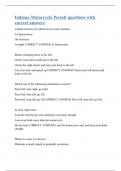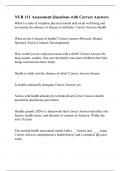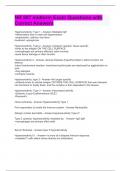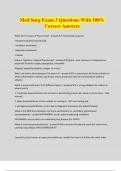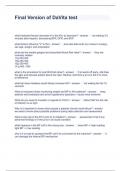Class notes
Class notes Introductory Biology (BIOL1010) Lesson 3
- Course
- BIOL1010 (BIOL1010)
- Institution
- Dalhousie University (Dal )
Lesson 3 notes taken from Dalhousie university, perfect to use while studying for exams. In-depth. Can be used while in lectures to save time typing basic notes and leaves time to create notes that matter
[Show more]




